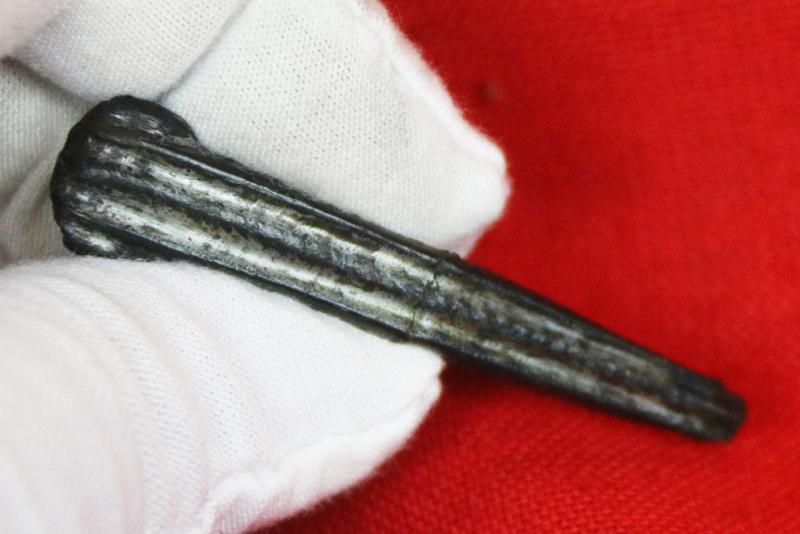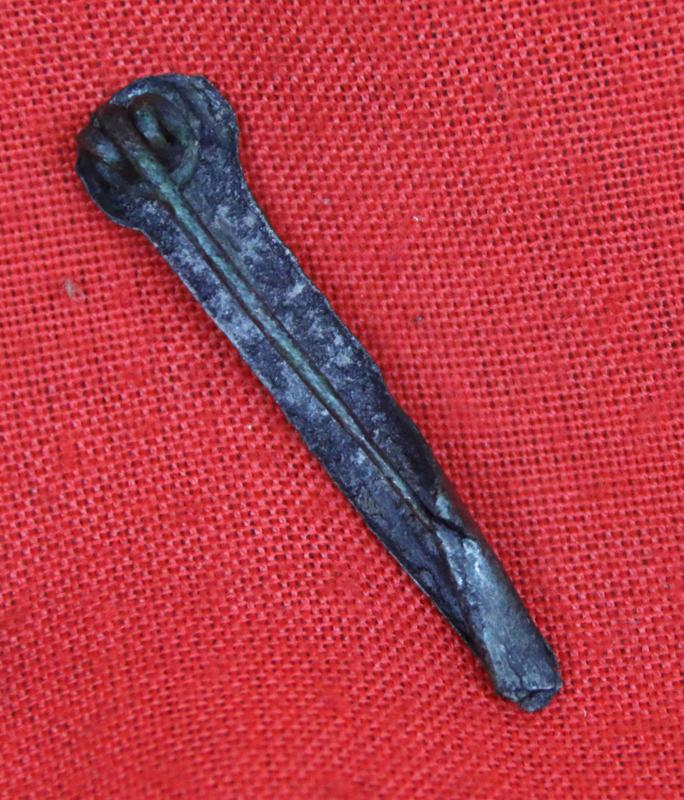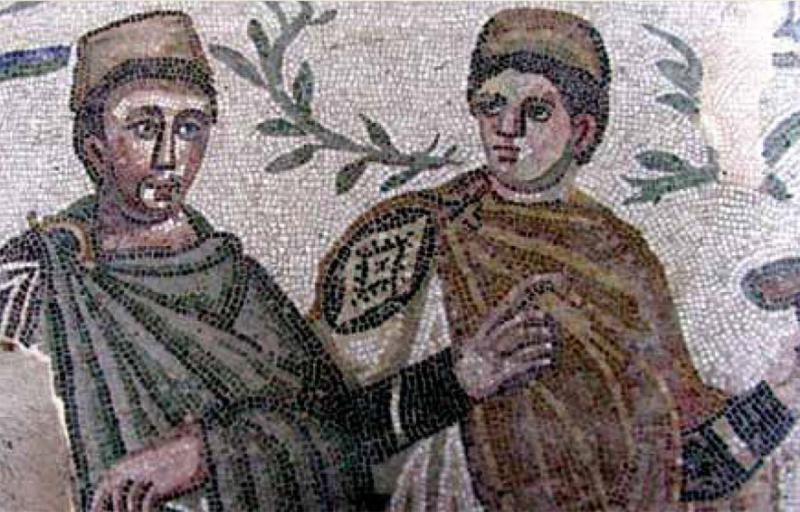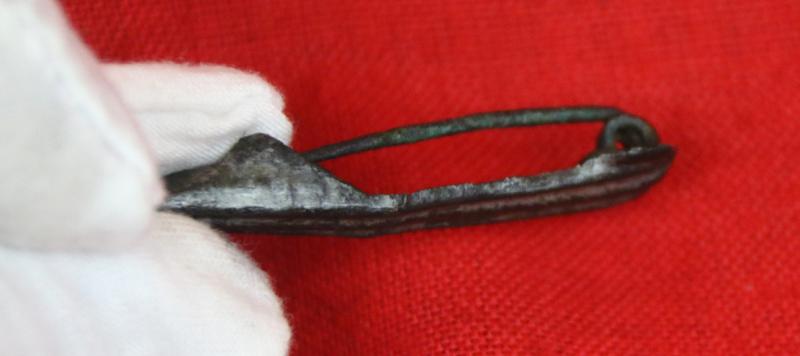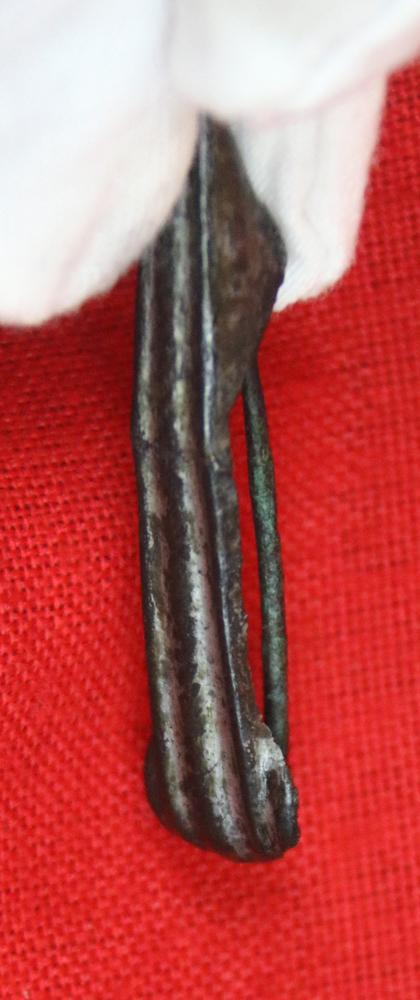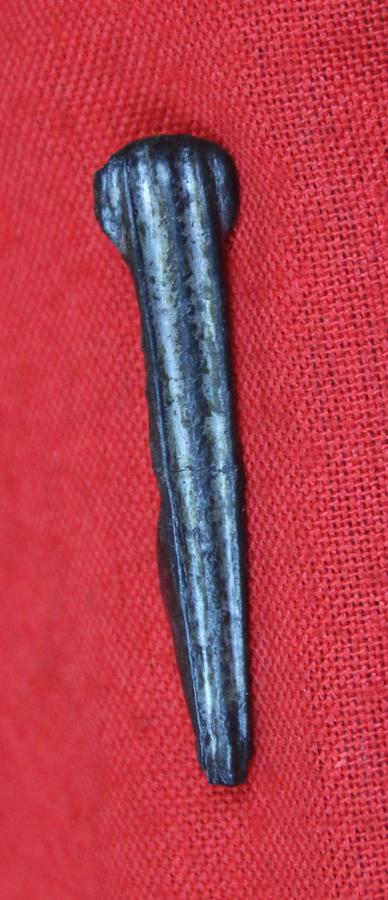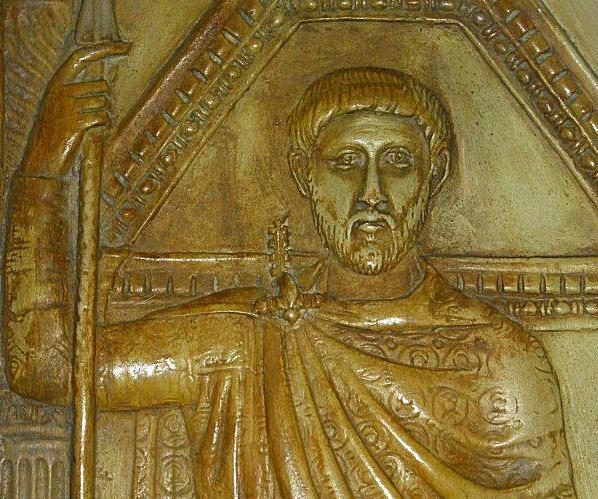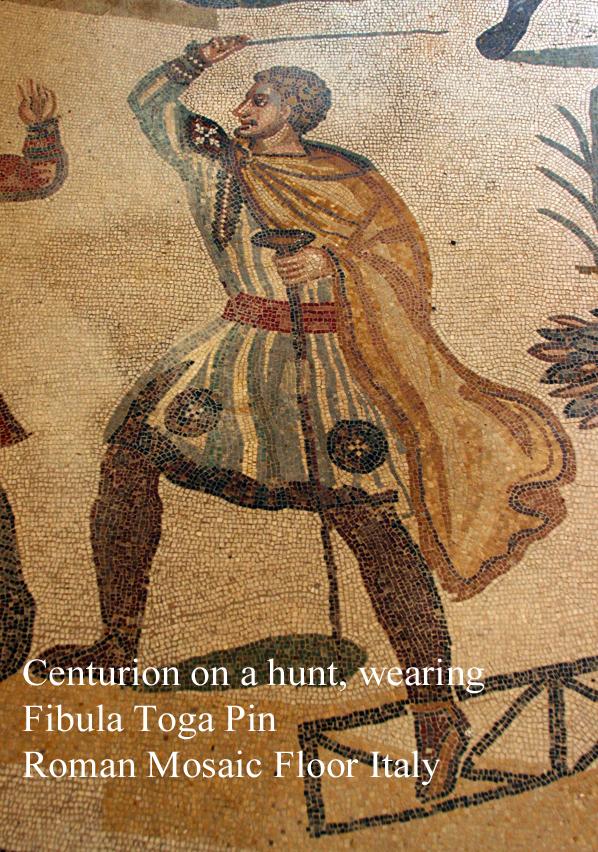Original Ancient Roman ‘Cross-bow” Fibula Bronze Toga Pin Military Issue, Fine Piece For Higher Ranking Figures in the Legion, Such As a Centurion or Tribune. Bow Fibula with a Folded Spring Hinge, Early Imperial - Beginning of Anno Domini 2nd Century.
We acquired a very small collection of different Roman toga pins, A super, small collection of original, historical, Imperial Roman, Viking, and Crusader's artefacts has just been acquired by us.
Shaped in the form of a roman military crossbow fibula, in bronze.
It became the most popular form of closure for Roman fibulae, and is characteristic of the bow brooches from the early imperial times to the beginning of the AD 2nd century. Original Ancient Roman ‘Cross-bow” Fibula Bronze Toga Pin Military Issue, Fine Piece For Higher Ranking Figures in the Legion, Such As a Centurion or Tribune, c. Early Imperial - Beginning of AD 2nd Century.Arguments abound over what shoulder was exposed, but it seems fairly clear that the garment was fastened loosely enough to move around, The paludamentum was a cloak that was specifically associated with warfare. A general donned one for the ceremonial procession leading an army out of the sacred precinct of the city of Rome and was required to remove it before returning to the city…a sign that he was no longer a general, but a common citizen. The paludamentum or sagum purpura (purple cloak) was the iconic red cloak worn by a Roman general (Legatus) and his staff officers. Originally, it’s distinctive red/purple color clearly delineated between these officers and the rest of the army, which sported the sagum gregale (cloak of the flock). Although the sagum gregale, worn by the rank and file, started out the color of the flock (i.e. undyed wool), it seems likely to have transitioned to a coarser version of the sagum purpura by the imperial period (27BC – AD 476). Outfitting the entire army in red garments would have been a mark of the great wealth of Rome – well, that and the fact that the Romans controlled the source of purple dye by then.The pin is now frozen through two millennia in a fixed position.
Richard Lassels, an expatriate Roman Catholic priest, first used the phrase “Grand Tour” in his 1670 book Voyage to Italy, published posthumously in Paris in 1670. In its introduction, Lassels listed four areas in which travel furnished "an accomplished, consummate traveler" with opportunities to experience first hand the intellectual, the social, the ethical, and the political life of the Continent.
The English gentry of the 17th century believed that what a person knew came from the physical stimuli to which he or she has been exposed. Thus, being on-site and seeing famous works of art and history was an all important part of the Grand Tour. So most Grand Tourists spent the majority of their time visiting museums and historic sites.
Once young men began embarking on these journeys, additional guidebooks and tour guides began to appear to meet the needs of the 20-something male and female travelers and their tutors traveling a standard European itinerary. They carried letters of reference and introduction with them as they departed from southern England, enabling them to access money and invitations along the way.
With nearly unlimited funds, aristocratic connections and months or years to roam, these wealthy young tourists commissioned paintings, perfected their language skills and mingled with the upper crust of the Continent.
The wealthy believed the primary value of the Grand Tour lay in the exposure both to classical antiquity and the Renaissance, and to the aristocratic and fashionably polite society of the European continent. In addition, it provided the only opportunity to view specific works of art, and possibly the only chance to hear certain music. A Grand Tour could last from several months to several years. The youthful Grand Tourists usually traveled in the company of a Cicerone, a knowledgeable guide or tutor.
The ‘Grand Tour’ era of classical acquisitions from history existed up to around the 1850’s, and extended around the whole of Europe, Egypt, the Ottoman Empire, and the Holy Land.
Fibula 54mm long
Every single item from The Lanes Armoury is accompanied by our unique Certificate of Authenticity. Part of our continued dedication to maintain the standards forged by us over the past 100 years of our family’s trading, as Britain’s oldest established, and favourite, armoury and gallery
Code: 23986
245.00 GBP


